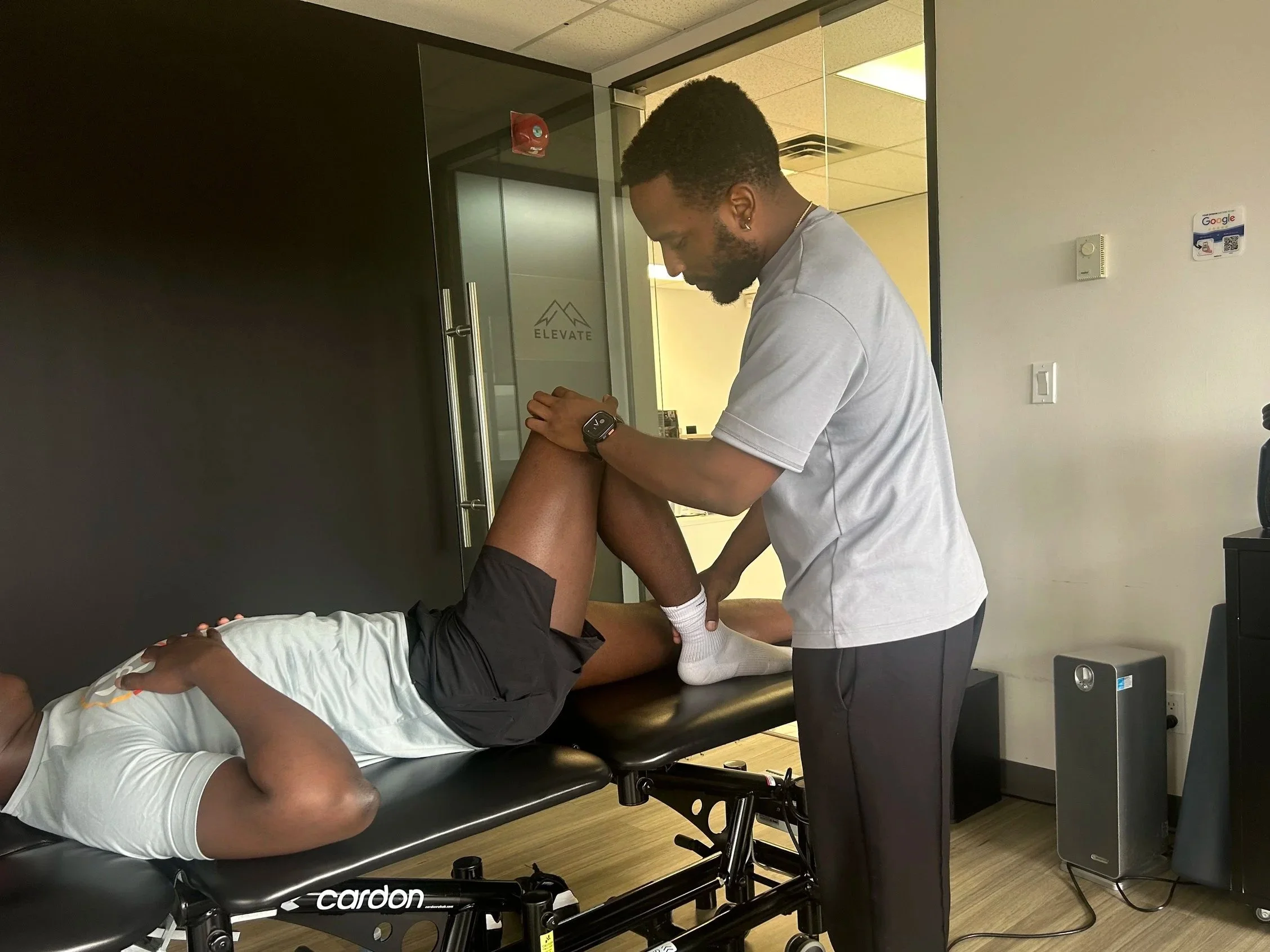ACL Rehab Timeline: What to Expect Week by Week
Recovering from an ACL tear, whether you had surgery or chose non-operative management, is a long-term process that requires patience, consistency, and guidance. One of the most common questions we hear at our Oakville clinic is, "How long will this take?"
The truth is, every rehab journey is unique. But having a general timeline can help you understand the phases of recovery, set expectations, and track your progress. This blog will give you a week-by-week breakdown based on best practices and what we see in our clinic every day.
Weeks 0 to 2: Acute Recovery and Protection Phase
This phase focuses on protecting the knee and laying the foundation for future mobility. The goal is to manage pain and swelling, restore basic movement, and begin gentle muscle activation.
Key objectives:
Control inflammation with rest, elevation, compression, and ice
Regain full knee extension (straightening)
Begin gentle quadriceps activation
Use crutches or a brace as recommended
Start basic physiotherapy exercises
Progress during these early weeks may feel slow, but this phase is critical for preventing long-term complications.
Weeks 3 to 6: Regaining Range of Motion and Basic Strength
Once swelling has reduced, the next step is to focus on increasing knee mobility and restoring normal gait patterns. Muscle activation continues to be a key priority.
Treatment typically includes:
Passive and active-assisted range of motion exercises
Isometric strength training for the quads, glutes, and hamstrings
Balance and weight-shifting drills
Gait retraining to normalize your walking pattern
Goals by the end of week 6:
90 to 120 degrees of knee flexion
Walking without a limp
Noticeable improvement in quad strength
Weeks 6 to 12: Strength Building and Stability
Now that your walking is normalized and mobility has improved, the focus shifts to building strength and joint stability. This is where your rehab begins to feel more active and engaging.
Exercises and techniques include:
Bodyweight squats, step-ups, and lunges
Glute bridges and hamstring curls
Core stabilization
Single-leg balance and proprioception drills
Introduction of cardio on an Anti-Gravity treadmill or stationary bike
Goals by week 12:
Solid single-leg balance
Increased lower body strength and endurance
Minimal to no pain with daily activities
Weeks 12 to 20: Power Development and Controlled Impact
During this phase, rehab becomes more dynamic. You will begin to reintroduce higher-level movements like hopping, bounding, and controlled jumping. Plyometric drills and agility work also start to appear in your program.
Focus areas include:
Eccentric strength (controlling movement as you lower or decelerate)
Power training using resistance bands and light weights
Advanced balance drills and single-leg hops
Return to light jogging or anti-gravity treadmill running, if cleared
By the end of this phase, you should:
Demonstrate proper landing mechanics
Perform low-level sport-specific drills
Maintain strength and mobility gains without flare-ups
Weeks 20 to 30+: Return to Sport and Performance Training
This final phase prepares you for a full return to sport or high-demand activities. Testing for symmetry, power output, and neuromuscular control is essential before clearance.
Rehab now includes:
Sprinting, cutting, and pivoting drills
Plyometric progressions like box jumps and lateral hops
Strength and conditioning similar to pre-injury levels
Functional testing to assess readiness for return to sport
Some patients may reach this stage by 6 months, while others may need 9 to 12 months. The key is not to rush. Returning too soon increases your risk of re-injury.
ACL Rehab is a Marathon, Not a Sprint
ACL recovery is a long journey, but it is one you do not have to take alone. Whether you are an athlete returning to the field or an active adult eager to get back to hiking or playing with your kids, a structured rehab plan makes all the difference.
At our Oakville clinic, we guide you through every step of the process of our ACL Rehab Program with a team that includes physiotherapists, athletic therapists, massage therapists, and chiropractors. Together, we help you rebuild strength, confidence, and resilience.
📍 710 Dorval Dr Unit 520, Oakville, ON
📞 (289) 835-2949
💻 https://www.elevaterehabilitation.com/

